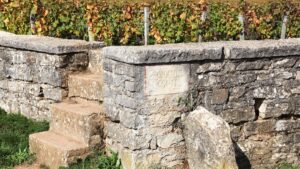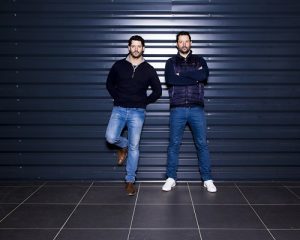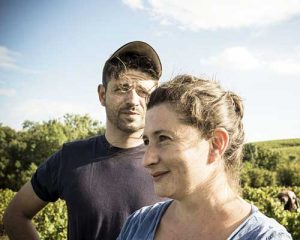
There are few names that conjure up more excitement, reverence, or more superlatives in the wine world. Château Rayas, Pignan, Fonsalette, des Tours and la Pialade – all share a common denominator, in addition to producing some of the finest wines in the Rhône Valley: Emmanuel Reynaud. This inimitable winemaking genius of unprecedented talent has succeeded in elevating his different estates, starting with Château Rayas, to the pinnacle. Today, we’re taking a deep dive into the wines that consistently top Rhône Valley auction charts, attracting wine lovers from all over the world. Let’s decipher the Reynaud phenomenon.
A FAMILY TRADITION
The Rayas story dates back to 1880, when the current owner’s great-grandfather, Albert Reynaud, a notary from the Avignon area, acquired an estate in the Rayas area of Châteauneuf-du-Pape. As was often the case in those days, the estate consisted of multiple crops, centred on vines, olives and apricots. Taking over from his father in 1920, Louis Reynaud was particularly interested in vines and studied agriculture in Angers. He was instrumental in gradually transforming Rayas into what it is today. Not only did he bottle the first wine on the estate, he also extended the property by uprooting trees to plant new parcels of vines. In 1935, he acquired the Domaine des Tours in Sarrians, entrusting it to his son Bertrand. Just after the war, he went on to purchase Château de Fonsalette, located north of Orange. Following Louis’ passing in 1978, his youngest son, Jacques, succeeded him at the head of the Rayas and Fonsalette estates, while his eldest son, Bertrand, continued to run the Domaine des Tours. His father taught Jacques everything there was to know about vinifying Rayas Grenache grapes. Just like him, Jacques was a ‘wild one’ who didn’t take kindly to some visitors or journalists and didn’t shy away from showing it, just like his sister Françoise, who handled the administrative work on the estate. Jacques, a confirmed bachelor, died unexpectedly in 1997, and, of course, leaving no descendants. As a result, Emmanuel, his nephew and manager of Château des Tours (having succeeded his father Bertrand), assumed responsibility for all the Reynaud family estates. Following a few transitional years (1997-2002), necessary to renovate the estate’s facilities and replace numerous missing vines in most parcels, Emmanuel Reynaud successfully took over from his uncle. During this specific period, however, the vintages proved a little below the usual exceptional standard.

Rayas Vines
The legendary status of Rayas is due, of course, to the exceptional quality and personality of its wines, as well as other factors that have nothing to do with its vines. The location, first of all, is a château in name only. Imagine an austere, characterless old building that’s hard to find and looks more like a technical farm building than a prestigious residence. The winery itself is clean, but dusty and ancient – it almost feels like you’re stepping back a hundred years in time when you visit it. The myth is strongly reinforced by the contrast between the rusticity of the premises and the refinement of the wine. Perhaps more than anything else, however, it’s the strong personalities of the Reynaud men that played the biggest part here. Jacques was known for his short temper, and he didn’t care whether visitors were well-known journalists, local or national political figures. If he didn’t like the look of them, he’d throw them out without a second thought. Although less extreme, his nephew Emmanuel’s personality is rather hard to define. Possibly one way of perpetuating the legend of the uncle! What is certain is that the nephew produces wines that are just as brilliant as his uncle’s!
EMMANUEL REYNAUD’S DIFFERENT ESTATES

Château Rayas (one of very few properties in the appellation to bear the name of a local ‘climat’) spans some ten hectares of vines, divided into multiple plots. These are often beautifully enshrined in superb pine forests thriving on almost exclusively sandy soil, a unique feature in Châteauneuf, which explains why the red wine is so distinctive, with a delicacy and finesse that evoke the finest Burgundy wines (unless it’s the other way round!) The red is a 100% Grenache vinified from whole bunches in concrete vats and aged for two years in large, old wooden barrels. The white consists of 50% Grenache Blanc and 50% Clairette.
Pignan is not Rayas’ second wine. This is a plot-based 100% Grenache, produced from vines planted in soils that are much less sandy. This wine accounts for around 20% of the Rayas estate’s production and is more similar to a classic Châteauneuf, whereas the Rayas is a completely different wine within the appellation.
Château Fonsalette consists of a series of vines (around ten hectares) acquired in 1945 and located to the north of Orange in the commune of Lagarde-Paréol. Today, most of these vines are located in the Massif d’Uchaux appellation, but this will probably never be claimed, as the Fonsalette ‘brand’ has greater impact than the name of an appellation. The red wine consists of Grenache (50%), Cinsault (35%) and Syrah (15%), while the white wine is a blend of Grenache (80%), Clairette (10%) and Marsanne (10%). The Fonsalette wines are vinified at Château Rayas.
La Pialade is a cuvée of Côtes du Rhône produced, depending on the year, from Rayas and/or Fonsalette wines deemed unsuitable for the final blend. This cuvée is typically a blend of Grenache (80%), Cinsault (15%) and Syrah (5%). This small production is much sought-after by wine lovers, as it is very similar to the legendary subtle, delicate and refined essence of Château Rayas, though, of course, offering less depth. You could say that this is an ‘everyday’ Rayas at a much more affordable price. Unfortunately, it is difficult to come by on account of the small quantities produced…

Château des Tours is the largest (40 hectares) and the most ‘standalone’ of the Rayas estates. First of all, it’s the only one not to be vinified in the Rayas winery. It was never really part of the ‘galaxy’, as it was entrusted to Bertrand, Jacques Reynaud’s brother, who himself inherited Rayas and Fonsalette. And also, because his Vacqueyras terroir has nothing in common with those of Rayas or even Fonsalette. The wines of Fonsalette and Rayas (vinified by the same person, Jacques Reynaud) have always had more in common than those of Château des Tours, not only because of their terroir, but also because of the people behind them, since the latter were vinified by Bertrand Reynaud and then by his son Emmanuel. Today, of course, things are a little different, as Emmanuel is now in charge of all the estates. While the differences have naturally faded, the ‘Vacqueyras’ character still stands out from the more subtle, delicate and refined textures of the Rayas and Fonsalette wines. This estate produces a slightly wider range of wines due to its important size. Under the name Château des Tours, it offers a red Vacqueyras (80% Grenache and 20% Syrah), a red Côtes-du-Rhône (65% Grenache, 15% Cinsault and 20% Syrah) and a white Côtes-du-Rhône (100% Grenache). Under the name Domaine des Tours, it offers a red Vin de Pays de Vaucluse (Grenache, Counoise, Syrah, Cinsault, Merlot and various other grape varieties) and a white Vin de Pays de Vaucluse (100% Clairette). And lastly, under the ‘Parisy’ label, it offers a rosé table wine crafted from a blend of Grenache and Cinsault.



